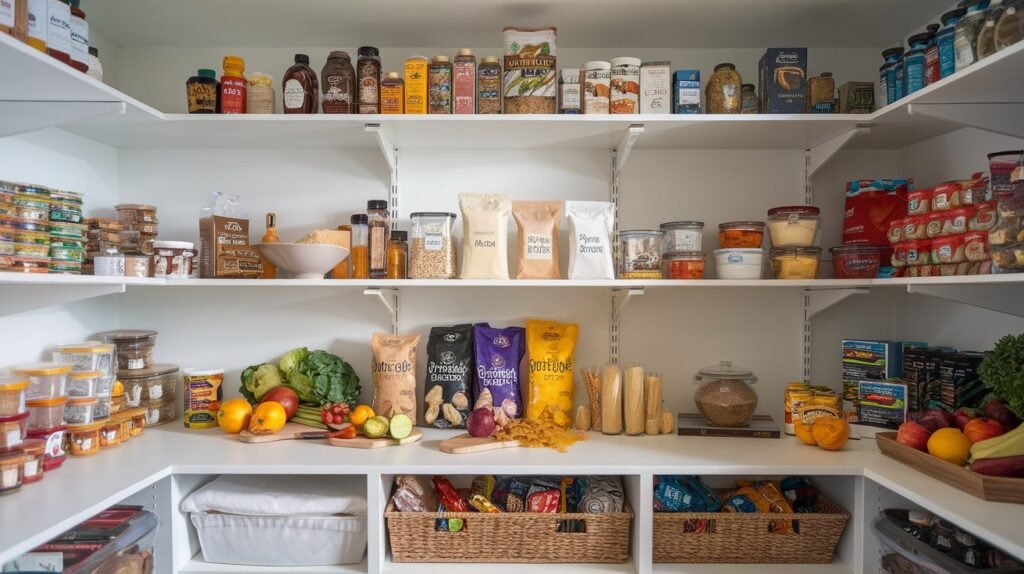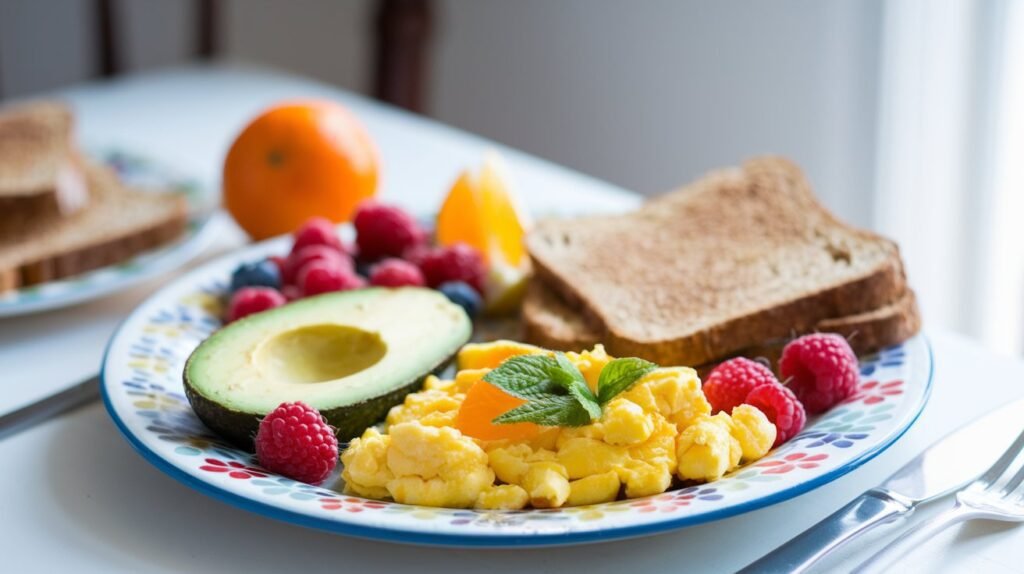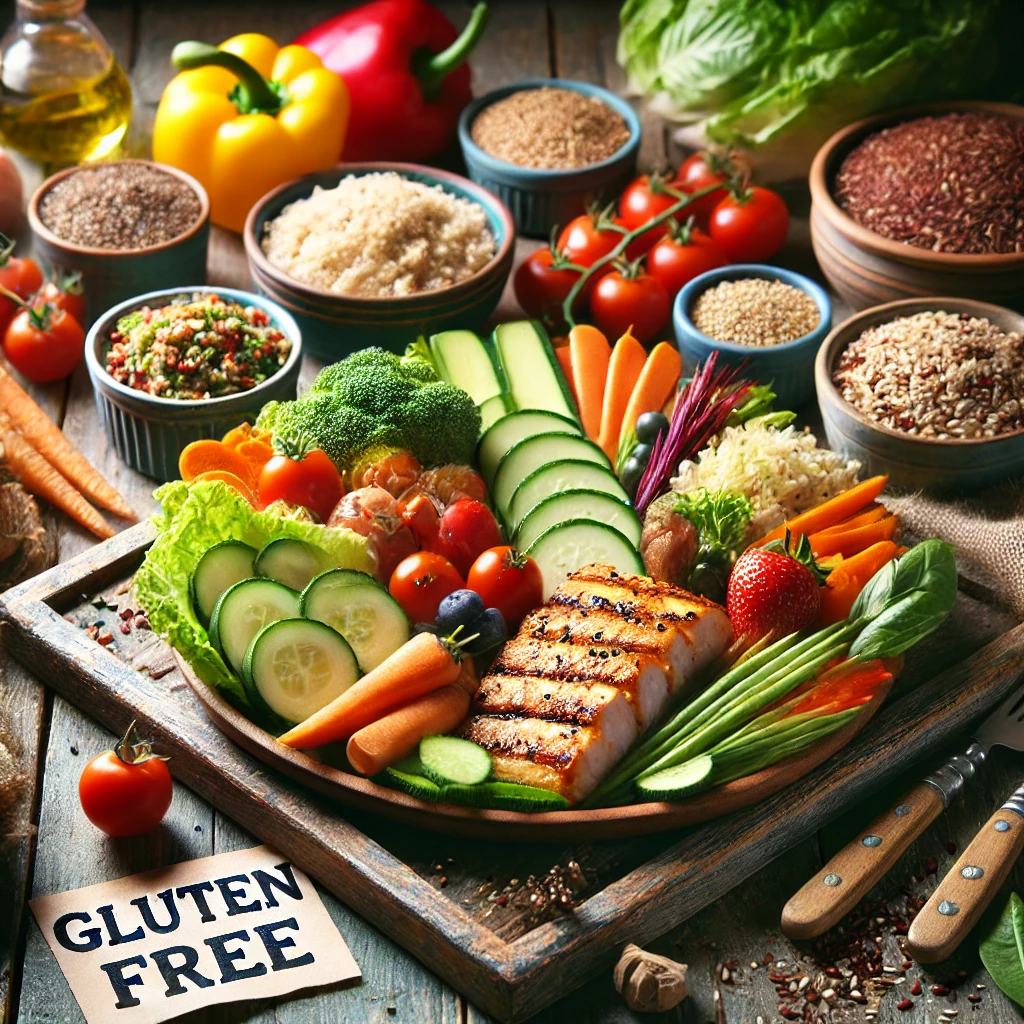Introduction
A gluten-free diet has gained significant popularity in recent years, both as a necessity for individuals with gluten intolerance or celiac disease and as a lifestyle choice for others seeking potential health benefits. If you’re new to this way of eating, starting can be daunting due to the wide range of gluten-containing foods that are prevalent in everyday meals. However, a gluten-free diet is not as restrictive as it may seem.
In this guide, we’ll explore what gluten is, the benefits of going gluten-free, and provide a comprehensive gluten-free diet plan for beginners.
Table of Contents
What is Gluten?
Gluten is a protein found in grains such as wheat, barley, and rye. It helps foods maintain their shape, acting as a glue that holds them together. Foods like bread, pasta, cereals, and baked goods often contain gluten, making it a prevalent part of many diets.
While gluten is harmless for most people, those with celiac disease or non-celiac gluten sensitivity can suffer severe side effects from consuming even small amounts.
Who Should Follow a Gluten-Free Diet?
A gluten-free diet is essential for individuals with:
- Celiac Disease: An autoimmune disorder where gluten causes damage to the small intestine, leading to malabsorption of nutrients.
- Non-Celiac Gluten Sensitivity: Individuals who experience symptoms like bloating, fatigue, and headaches after consuming gluten but do not have celiac disease.
- Gluten Ataxia: A neurological autoimmune condition triggered by gluten, affecting muscle control and movement.
Benefits of a Gluten-Free Diet
For those who need it, a gluten-free diet can offer a range of benefits, including:
- Improved Digestive Health: Reduction of symptoms like bloating, gas, and diarrhea.
- Increased Energy Levels: Many individuals experience less fatigue once gluten is eliminated.
- Better Nutrient Absorption: For those with celiac disease, healing the gut lining allows for proper nutrient absorption.
- Weight Management: Focusing on whole, unprocessed foods can help with weight management.
However, for individuals without a gluten intolerance or sensitivity, the benefits may be less clear, and it’s essential to avoid highly processed gluten-free products that lack nutritional value.
Gluten-Free Foods: What to Eat and Avoid

Safe Gluten-Free Foods
Many naturally gluten-free foods are highly nutritious and suitable for anyone following this diet. These include:
- Fruits and Vegetables: All fresh fruits and vegetables are naturally gluten-free.
- Meat and Fish: Fresh, unprocessed meats, poultry, and fish.
- Dairy Products: Milk, butter, cheese, and yogurt are generally gluten-free (always check for additives).
- Gluten-Free Grains: Rice, quinoa, corn, and buckwheat.
- Legumes and Nuts: Beans, lentils, chickpeas, and nuts are all safe.
- Eggs: A rich source of protein and naturally gluten-free.
Foods to Avoid
The following foods typically contain gluten and should be avoided:
- Wheat-Based Products: Bread, pasta, pastries, and cereals.
- Barley: Found in malt, soups, and beer.
- Rye: Present in some bread and cereals.
- Processed Foods: Many processed foods can contain hidden gluten, including sauces, soups, and flavored snacks.
- Certain Alcoholic Beverages: Beer and malt beverages often contain gluten, though gluten-free options are available.
A Gluten-Free Diet Plan for Beginners
Week 1: Simple Introduction
The goal for the first week is to ease into gluten-free eating with simple, naturally gluten-free meals. Focus on whole, unprocessed foods to minimize the risk of accidental gluten exposure.

| Day | Breakfast | Lunch | Dinner | Snacks |
|---|---|---|---|---|
| 1 | Scrambled eggs with avocado | Quinoa salad with chicken and vegetables | Grilled salmon with steamed broccoli | Rice cakes with almond butter |
| 2 | Smoothie with spinach, banana, and almond milk | Tuna salad with gluten-free crackers | Stir-fry with tofu and gluten-free soy sauce | Greek yogurt with berries |
| 3 | Gluten-free oats with chia seeds and berries | Grilled chicken with quinoa and mixed greens | Baked sweet potato with black beans | Apple slices with peanut butter |
| 4 | Omelette with spinach and cheese | Gluten-free turkey wrap | Grilled shrimp with zucchini noodles | Hummus with carrots |
| 5 | Yogurt with gluten-free granola | Salad with hard-boiled eggs, spinach, and olive oil | Grilled steak with roasted vegetables | Cottage cheese with cucumber |
| 6 | Smoothie with berries, almond milk, and flaxseeds | Rice bowl with chicken, avocado, and salsa | Baked salmon with roasted sweet potatoes | Nuts and seeds mix |
| 7 | Gluten-free pancakes with maple syrup | Grilled vegetable salad with quinoa | Chicken stir-fry with gluten-free soy sauce | Rice crackers with guacamole |
Week 2: Expanding Variety
In the second week, you can experiment with more gluten-free grains, recipes, and even try some gluten-free baking.
| Day | Breakfast | Lunch | Dinner | Snacks |
|---|---|---|---|---|
| 1 | Gluten-free waffles with honey and fruit | Lentil soup with gluten-free bread | Grilled pork chops with roasted potatoes | Mixed nuts and dried fruit |
| 2 | Scrambled eggs with spinach | Gluten-free pasta with tomato sauce | Grilled fish tacos with gluten-free tortillas | Apple slices with cheese |
| 3 | Smoothie bowl with gluten-free granola | Chicken and vegetable skewers | Turkey chili with gluten-free cornbread | Popcorn with olive oil |
| 4 | Gluten-free bagel with cream cheese | Grilled steak with quinoa and spinach | Baked salmon with asparagus | Celery sticks with almond butter |
| 5 | Yogurt parfait with chia seeds and berries | Gluten-free veggie wrap | Stuffed bell peppers with ground turkey | Dark chocolate and walnuts |
| 6 | Omelette with mushrooms and cheese | Gluten-free pizza with homemade toppings | Grilled chicken with brown rice | Rice cakes with peanut butter |
| 7 | Smoothie with almond milk, spinach, and banana | Baked chicken with roasted vegetables | Gluten-free lasagna with salad | Yogurt with gluten-free granola |
Tips for Staying Gluten-Free

- Read Labels Carefully: Many foods labeled gluten-free are processed, so always check for hidden sources of gluten.
- Watch Out for Cross-Contamination: Ensure your kitchen is gluten-free friendly by using separate cooking utensils, toasters, and cutting boards.
- Plan Ahead: When dining out, research restaurants that offer gluten-free options or ask about gluten-free menus.
- Experiment with Gluten-Free Alternatives: Gluten-free flours like almond, coconut, or rice flour are perfect for baking or cooking without gluten.
- Consult a Nutritionist: If you’re new to the diet, working with a nutritionist can ensure you’re meeting your nutritional needs without gluten.
Common Gluten-Free Diet Mistakes to Avoid
- Relying on Processed Gluten-Free Products: These can be high in sugar, fat, and calories. Stick to whole foods as much as possible.
- Not Supplementing Nutrients: Some gluten-free diets can lack fiber, iron, and B vitamins. Consider taking supplements if needed.
- Underestimating the Importance of Cross-Contamination: Even small amounts of gluten can cause symptoms for those with sensitivities.
Is a Gluten-Free Diet Healthy for Everyone?
While a gluten-free diet is essential for those with gluten-related disorders, it’s not necessarily healthier for the general population. Some gluten-free products are processed and lack important nutrients. Unless required for medical reasons, a gluten-free diet should be approached cautiously, ensuring a balanced intake of all necessary vitamins and minerals.
Conclusion
Embarking on a gluten-free diet as a beginner doesn’t have to be overwhelming. By focusing on whole, naturally gluten-free foods, learning to read labels, and planning meals in advance, you can successfully eliminate gluten from your diet while still enjoying a diverse range of nutritious meals. Always remember, balance is key, and gluten-free living can be healthy and satisfying if approached with proper planning and care.
References
- Fasano, A., & Catassi, C. (2012). “Celiac Disease”. New England Journal of Medicine, 367(25), 2419-2426.
- Biesiekierski, J. R. (2017). “What is gluten?” Journal of Gastroenterology and Hepatology, 32, 78-81.
- Case, S. (2005). “The gluten-free diet: How to provide effective education and resources”. Gastroenterology, 128(4 Suppl 1), S128-S134.




